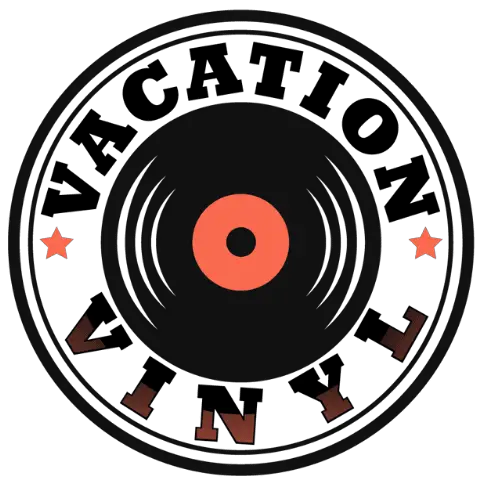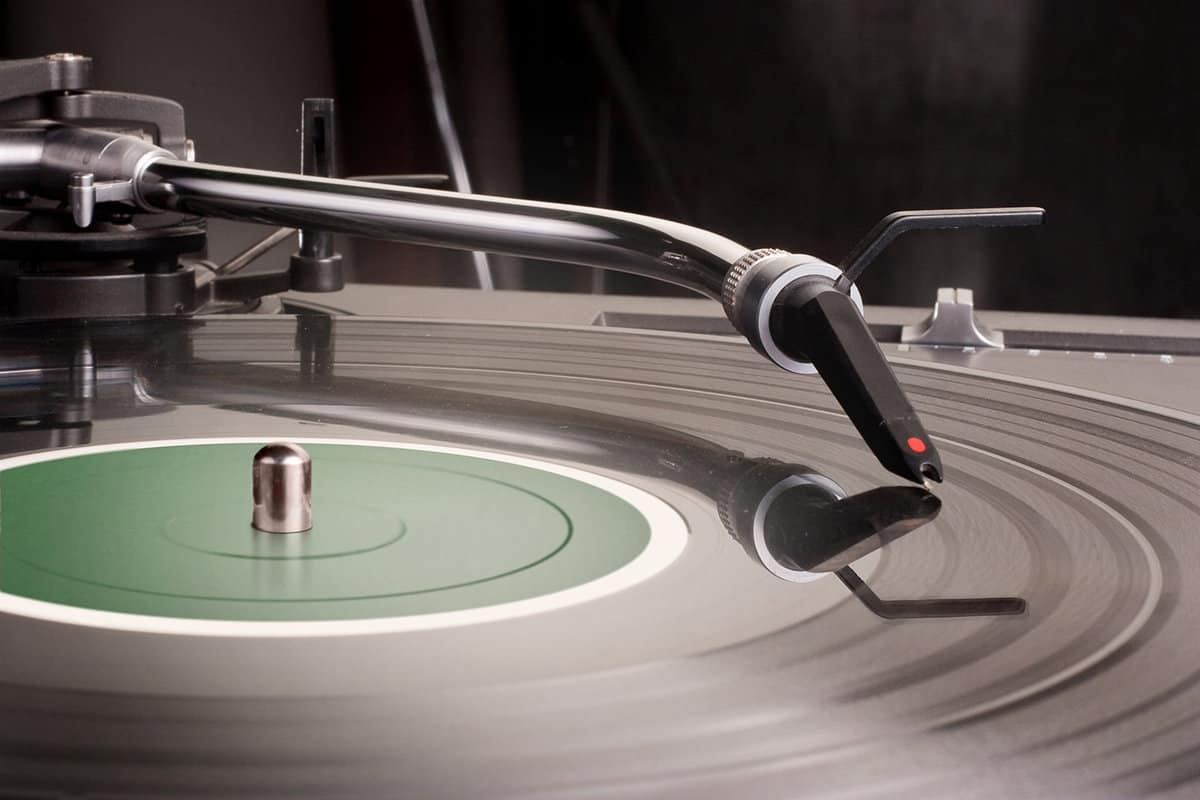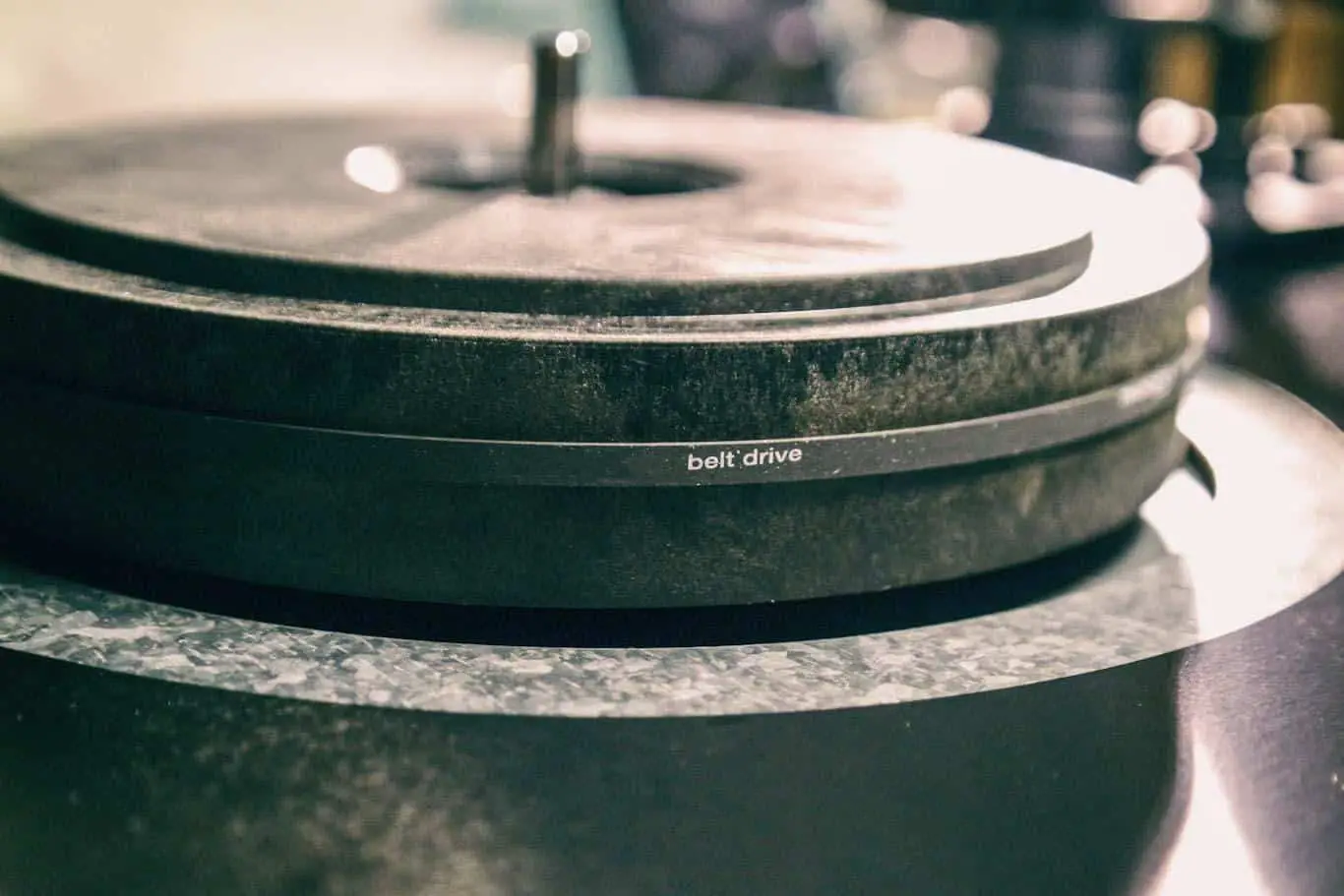This post contains affiliate links.

Sitting listening to your favorite record, relaxing with the audio pounding in your cans, and you hear the slip – the music slows for a few seconds and then speeds back up. You turn to see if someone entered the room and messed with your turntable – but no one is around. Time for a new turntable belt. But how long should your turntable belt last?
Most belt-drive turntables utilize a rubber-based closed loop belt that typically lasts up to 5 years or so. The lifespan of the belt is determined by its quality, tightness, elasticity, and use. With no use, a belt will last 5-6 years in typical conditions.
Not only will I share with you my experiences with turntable belts, but I’m also going to share a few tips and tricks to maintain your belt-drive turntable better. First, we’ll look at everything to do with the belt so you can make the most informed choices about your belt-drive turntable. Let’s get spinning into this.
Table of Contents
How Long Turntable Belts Last – Turntable Belt Lifespan Explained
As mentioned, several factors affect the viable longevity and useful lifespan of a turntable belt. Although my personal preference is for the direct-drive type of turntable (being a bit of a turntablist), belt-drive turntables are the best for isolating motor noise. When I listen to records at home, it’s usually on my belt drive unit.
Due to rubber degradation, most rubber-based turntable belts will last upwards of 5 years, depending on quality, use, and exposure to light, oxygen, and heat.
The issue with belt drive is that the belt fabrication typically occurs using rubber most of the time. Newer turntables use a variety of materials, but rubber has always been the turntable belt mainstay.
Rubber breaks down over time. Primarily caused by exposure to light, oxygen (ozone), or heat, rubber deterioration is inevitable. (source)
Rubber does a few things over time and exposure to the elements:
- Rubber dries and cracks.
- Rubber becomes brittle.
- Rubber loses elasticity.
- Rubber loses tensile strength.
Air, light, and heat are all factors that affect the degradation process of rubber. Rubber breaks down primarily in two ways: molecular chain hardening and molecular chain scission. These equate to the rubber becoming brittle and the rubber softening, respectively.
These two rubber degradations account for the bulk of belt failure over time. In the case of turntables, it’s usually the first issue – hardening and the belt turning brittle. However, when the belt softens, it stretches, causing slip, another common ailment to belt-drive tables.
Therefore, the overall lifespan of a belt is determined by the type of rubber, the extent of light, oxygen and heat exposure, and the amount of use.
When I regularly worked with my belt-drive turntable, I found that I had to change out the belt after about three years. That’s when I noticed the sound start to warble and mutate. It was pretty imperceptible at first, but then one day, it happened more noticeably, and I was forced to admit turntable belt defeat.
Factors That Affect Turntable Belt Quality (And Lifespan)
I mentioned how exposure to the elements would accelerate belt wear and degradation. Eliminating some of these factors may aid in increased longevity of the turntable belt.
To slow rubber belt degradation, you need to limit or eliminate the belt’s exposure to light, oxygen, and heat.
Light is easy, don’t leave the turntable upside-down in the sun – pretty straightforward. Heat is also reasonably straight – don’t mount your turntable over a heater or near a heating source. That’s right; you can’t have your turntable next to the fireplace if you want it to last, sorry.
The tough one is oxygen. How do you keep a turntable belt away from oxygen without launching it into outer space? There’s actually a pretty neat solution: treat the belt.
Now, I’ve heard a lot of arguments on both sides of using conditioners for belts. However, I’d like to point out that they had to do with trying to revive an already stiff belt most of the time.
Once a belt has weathered, become brittle, or stretched, you have to replace it. Don’t try to revive an already expired belt. It is a waste of time to try.
However, if you just got a new turntable or a new belt for your turntable, you can treat the belt right away to help prolong its lifespan.
Use products recommended for performance car engine belts. These conditioners are typically the best out there for maintaining higher-quality rubber belts.
Before you go spraying or wiping on an automotive product, though, it’s a good idea to reach out to the manufacturer and determine the belt material specifications before applying a belt conditioner. The newer turntables use various types of rubber, and you don’t want to use a conditioner that will damage the belt, so do your research based on your particular model and the year it was manufactured.
How Often You Should Replace Your Turntable Belt
Turntable belts made of rubber have an approximate lifespan of about five years at maximum. However, there are a few pieces of evidence that may point you to an immediate belt replacement. Let’s take a look at what those factors are.
- Prolonged ramp-up
- Pitch and time stalls
- Slips
When you turn on your turntable and hit start, you know that it takes a second or so to get up to speed, right? It’s typical of belt-drive turntables to do this by nature of the physics involved in using a belt drive. That said, when you notice that it’s taking longer than usual to get up to speed, the belt is likely stretched and is ‘trying to grab’ but not quite getting there in time.
Pitch and time stalls can be trickier to hear unless you have an audiophile-trained ear. Being a turntablist, I notice the slightest pitch or time shifts in the tracks I know well, but you might miss them when they first start.
Pitch and time stalls occur when a turntable belt starts to stretch or becomes brittle. When it stretches, it loosens on the motor and platter pulleys allowing slack to stall the momentum. When the belt hardens and turns brittle, hard spots can form where the belt won’t turn around the small motor pulley so readily. This situation causes the belt to stall on the small pulley as the brittle spot sticks out of not wanting to bend around the pulley. It slows the music for a second until the brittle spot pops over the small pulley wheel.
Slips are the obvious sign that you should replace a belt. You can’t miss a slip. You’ll be listening to your music, and there is a noticeable stop or change in the sound for a second or two. It’s a sure-fire thing you’ll need a new belt when the old one starts slipping.
Should Your Replace With An OEM Belt?
Over the years, I’ve talked to a lot of people about turntables. Most of the time, it’s talking about the direct drive or the latest and newest tech. But I also get asked quite a bit whether or not a turntable belt should have the originally manufactured equipment replacement belt or whether a generic belt of the exact dimensions is appropriate.
You can determine the answer to replacing turntable belts with OEM after asking a couple of questions.
- Is the OEM belt still available?
- Is the non-OEM belt a better quality than the OEM?
- Is the turntable any good?
If you answered yes to question 1 and no to question 2, skip question 3 and buy the OEM model.
If you answered no to question 1, you have no choice, buy the aftermarket belt.
If the turntable is a cheap or inferior quality variety, an aftermarket belt is likely better. In this case, the answer is also apparent – always get the better quality belt.
When I buy belts for my turntables, I use a rule: I buy two, and I shrink wrap one of them for future use. It’s a trick, a fellow DJ friend of mine told me. He had a vintage Linn LP 12 but couldn’t find a replacement belt at the time. He found an old record shop with a few newer belts because the owner had shrink-wrapped them and stored them in a box in his basement.
My friend bought two belts, put one on the table right away, and stuck the other in a box. Four years later, he used the boxed replacement. It saved him trying to find a second belt years later, and shrinkwrapping the belt preserved it for future use. It was a pretty neat trick, in my opinion.
VacationVinyl.com is a participant in the Amazon Services LLC Associates Program, an affiliate advertising program designed to provide a means for sites to earn advertising fees by advertising and linking to Amazon.com. We also participate in other affiliate programs which compensate us for referring traffic.



